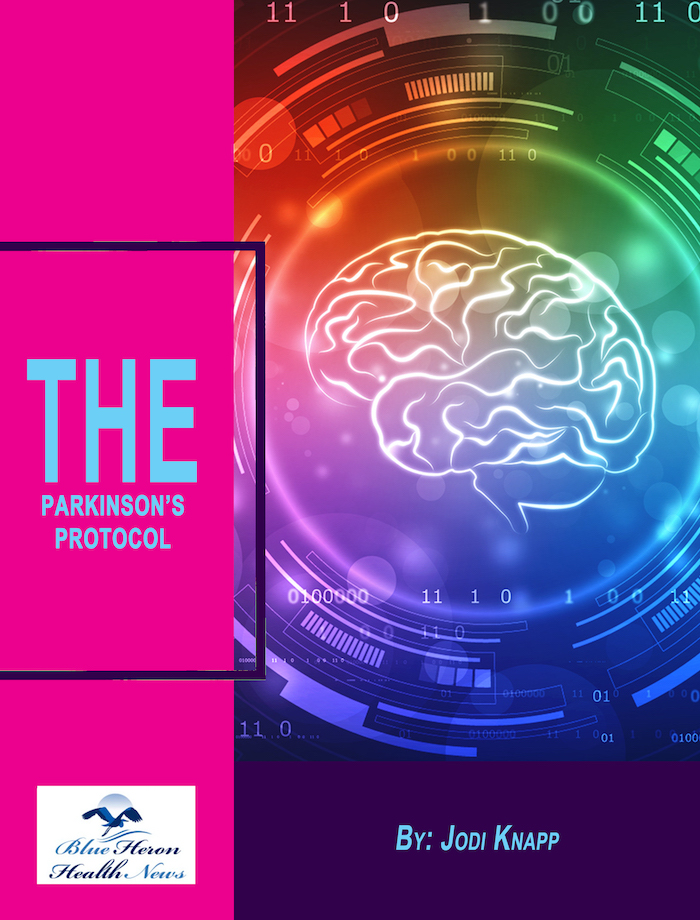
The Parkinson’s Protocol™ By Jodi Knapp Parkinson’s disease cannot be eliminated completely but its symptoms can be reduced, damages can be repaired and its progression can be delayed considerably by using various simple and natural things. In this eBook, a natural program to treat Parkinson’s disease is provided online. it includes 12 easy steps to repair your body and reduce the symptoms of this disease. The creator of this program has divided into four segments to cover a complete plan to treat this disease along with improving your health and life by knowing everything about this health problem. The main focus of this program is on boosting the levels of hormone in your brain by making e a few easy changes in your lifestyle, diet, and thoughts
What are the challenges in Parkinson’s research?
Parkinson’s disease (PD) research is a highly complex and evolving field, but it faces several significant challenges that hinder progress in understanding and treating the disease. These challenges span scientific, clinical, and societal domains. Below are the key obstacles in Parkinson’s research:
1. Lack of Early and Accurate Diagnosis
One of the most significant challenges in Parkinson’s research is the lack of reliable biomarkers for early diagnosis. PD is often diagnosed only when noticeable motor symptoms (like tremors or rigidity) appear, but by that time, substantial neurodegeneration has already occurred. This delay in diagnosis means that potential interventions to slow or stop the disease may be less effective.
- Symptoms Overlap: Many of Parkinson’s symptoms, particularly early on, overlap with those of other neurological or psychiatric conditions, making it difficult to differentiate PD from other disorders, such as essential tremor or dementia with Lewy bodies. This further complicates early diagnosis.
- Biomarker Development: While there’s growing interest in biomarkers—such as genetic, neuroimaging, or cerebrospinal fluid markers—no single test has proven to be both reliable and widely applicable for diagnosing PD in its earliest stages. Research in this area is ongoing, but significant hurdles remain.
2. Complexity of Disease Mechanisms
Parkinson’s disease is a multifactorial disorder, meaning that a combination of genetic, environmental, and age-related factors contribute to its development. This complexity makes understanding the disease mechanisms difficult.
- Alpha-Synuclein: The accumulation of alpha-synuclein protein into toxic clumps (Lewy bodies) is a hallmark of Parkinson’s, but researchers still do not fully understand why this process occurs or how to prevent or reverse it. Despite advances, the exact triggers for protein misfolding and aggregation remain elusive.
- Neurodegeneration: Parkinson’s is primarily characterized by the loss of dopamine-producing neurons in the brain, particularly in the substantia nigra. However, researchers are still working to understand why these neurons are vulnerable and how to protect them from degeneration. Additionally, PD affects other areas of the brain and leads to a range of non-motor symptoms, such as cognitive decline, mood disorders, and sleep disturbances, which are even less understood.
- Genetic and Environmental Factors: While certain genetic mutations have been linked to an increased risk of developing PD (e.g., mutations in the LRRK2 gene), these account for only a small percentage of cases. Most PD cases are considered idiopathic, meaning the cause is unknown. Environmental factors, such as pesticide exposure, head trauma, and other toxins, also play a role but are not fully understood.
3. Limited Treatment Options
Currently, there is no cure for Parkinson’s disease. Existing treatments, like levodopa and deep brain stimulation (DBS), can alleviate symptoms but do not stop disease progression. Research is ongoing to develop disease-modifying therapies that can address the underlying causes of PD, but progress has been slow.
- Symptom Control vs. Disease Modification: Most PD treatments focus on managing symptoms (e.g., tremors, rigidity) rather than addressing the root causes of the disease. While drugs like levodopa have been effective in treating motor symptoms, they do not halt neurodegeneration or slow disease progression.
- Side Effects of Current Treatments: Long-term use of levodopa, the gold standard for managing motor symptoms, can lead to complications like dyskinesias (involuntary movements) and motor fluctuations (on-off phenomena). Researchers are working on new drugs and delivery systems to address these issues, but no therapy has yet been developed that can prevent or reverse the damage caused by PD.
- Challenges in Developing Disease-Modifying Therapies: The difficulty of targeting the underlying causes of PD lies in the complexity of the disease. Whether it’s protein aggregation, mitochondrial dysfunction, neuroinflammation, or other mechanisms, developing drugs that address these issues in a safe and effective way has proven to be a daunting task.
4. Challenges in Clinical Trials
Clinical trials for Parkinson’s disease face several barriers that slow down the discovery of new treatments.
- Recruitment and Retention: Recruiting patients for clinical trials can be challenging, especially given that PD affects a relatively specific demographic (older adults, mostly over 60). Additionally, as the disease progresses, some patients may have difficulty traveling to trial sites or may lose the ability to communicate, which can impact participation.
- Trial Design and Outcomes: Parkinson’s trials often focus on assessing motor symptoms, but these do not always correlate with quality of life or the non-motor aspects of the disease. Designing trials that evaluate a broad range of symptoms, including cognitive and emotional aspects, is difficult. Moreover, measuring progression in a slow-moving disease like Parkinson’s requires long-term studies, making it challenging to get conclusive results quickly.
- Heterogeneity of PD: Parkinson’s disease varies widely between individuals in terms of symptom presentation, progression rate, and response to treatment. This heterogeneity complicates clinical trial designs, as therapies may be more effective for some patients but not for others. Personalizing treatments based on genetic, environmental, or other factors is an ongoing area of research.
5. Financial and Resource Limitations
Parkinson’s disease research often faces financial and resource constraints that can slow progress.
- Funding Shortages: While Parkinson’s disease is a common neurodegenerative disorder, it does not receive the same level of research funding as conditions like Alzheimer’s disease or cancer. This funding gap can limit the scope and scale of research studies, slowing the discovery of new treatments or breakthroughs.
- High Costs of Research: The development of new therapies, especially those targeting complex aspects like gene therapy or stem cell treatments, requires significant investment. The financial commitment needed for large-scale clinical trials or expensive technologies (such as neuroimaging or gene editing tools) can be a barrier for many research initiatives.
6. Challenges in Translating Animal Models to Humans
Much of Parkinson’s research is based on animal models, such as mice or non-human primates, which are used to test new drugs, interventions, or therapies. However, translating findings from these models to human patients has proven to be difficult.
- Model Limitations: While animal models can mimic some aspects of Parkinson’s disease (such as the loss of dopamine-producing neurons), they do not fully replicate the complexity of human PD. For example, the progression of the disease in humans may differ significantly from that in animals, and certain human-specific factors (like genetics or environmental exposures) are not reflected in animal models.
- Variability in Human Response: Even if a treatment is effective in animals, it does not guarantee that it will have the same effect in humans. Differences in biology between species can result in unexpected side effects or reduced efficacy in human trials.
7. Social and Ethical Considerations
As Parkinson’s disease research progresses, it also faces several social and ethical considerations.
- Access to Treatments: If new therapies or interventions are developed, there will be concerns about accessibility and equity. High-cost treatments, such as gene therapy or stem cell-based approaches, may only be available to certain populations, exacerbating disparities in healthcare access.
- Ethical Concerns with Stem Cell Research: Stem cell research, particularly involving embryonic stem cells, raises ethical questions about the source of the cells and their use in humans. These ethical considerations can delay the approval and implementation of new therapies derived from stem cell research.
Conclusion
Parkinson’s disease research faces significant challenges, from the complexity of the disease itself to issues surrounding early diagnosis, treatment development, and clinical trial execution. While progress is being made in areas like biomarkers, gene therapy, and new drug development, overcoming these obstacles requires continued collaboration across disciplines, sustained funding, and innovative solutions to address the multifaceted nature of the disease. Despite the challenges, advances in Parkinson’s research offer hope for better treatments and, potentially, a cure in the future.

The Parkinson’s Protocol™ By Jodi Knapp Parkinson’s disease cannot be eliminated completely but its symptoms can be reduced, damages can be repaired and its progression can be delayed considerably by using various simple and natural things. In this eBook, a natural program to treat Parkinson’s disease is provided online. it includes 12 easy steps to repair your body and reduce the symptoms of this disease. The creator of this program has divided into four segments to cover a complete plan to treat this disease along with improving your health and life by knowing everything about this health problem. The main focus of this program is on boosting the levels of hormone in your brain by making e a few easy changes in your lifestyle, diet, and thoughts